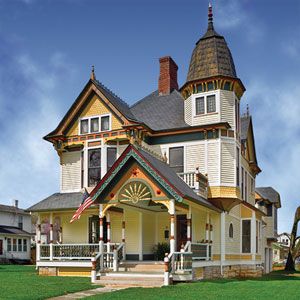
Good-quality snapshots are a key part of submitting projects to This Old House. Even if we love what you’ve done with the place, we can only publish a story if the pictures are up to snuff. That doesn’t mean you have to become a professional photographer—just follow the guidelines that we put together for readers like you.
General Tips and Tricks
- We prefer to use digital images, but will accept original negatives, transparencies and slides.
- When using a digital camera, select the highest-quality resolution, and save them in the largest file size possible.
- Save the files in RAW or TIFF format for submissions to the print magazine, and as JPEGs or GIFs for the website or contest entries.
- Turn off the camera’s date/time stamp.
- Don’t use a flash when photographing windows or glass surfaces.
- When shooting close ups or detail shots, try using the aperture priority mode and select an aperture of f4 or 5.6. This is also a good trick to isolate an object from its background.
- Don’t tilt the camera. Photographing a house or a room or a piece of furniture straight-on generally works best in TOH.
- Use a tripod whenever possible. This will compensate for longer exposure times and prevent camera movement.
Tips for Shooting Interiors
- Tidy up the house. Put away clothes in the bedrooms, clean off countertops in the kitchen, and fold the towels in the bathrooms. Generally, clear surfaces of clutter and tchotchkes; less is more. Look at past issues of This Old House for ideas on how to style your rooms.
- Shoot in natural light without the flash, which would make the interior lighting uneven and create harsh shadows. For this reason, don’t shoot interiors at night.
- Select the best possible portion of a room to photograph.
- Use a wide-angle lens or choose the maximum wide-angle setting to frame as much of the room as possible.
- Take individual shots of the key elements of a room and unique architectural details.
Tips for Shooting Exteriors
- Frame the structure so that there’s some extra space around it. This gives the building context.
- Try to keep the sun behind you. Whenever possible, utilize softer early morning or late afternoon light. On a sunny day avoid shooting from 11 am to 1 pm, when light is harsh and shadows are dark.
- Better yet, take your pictures on a slightly overcast or hazy day. The softer light in these conditions makes colors appear more saturated.
- Try to photograph gardens just after it rains—when your blooms look rich and bright. To recreate this effect, you can water everything well.